April Macro Matters
APRIL 2021
April is the month of rebirth. The woodlands and hedgerows come alive with colour. Wood anemones, wood sorrel, and the star-like blooms of lesser celandine cast a yellow carpet of colour across the woodland floor, to be replaced with the white blur of wood anemones that vibrate gently in the breeze. One of the first orchids to appear is the early purple, which can be seen in woodlands towards the end of the month. It is one of our most attractive species. Wind is the macro photographer’s nemesis, and on days when it’s persistent avoid those delicate blooms if you want to keep frustration at bay.
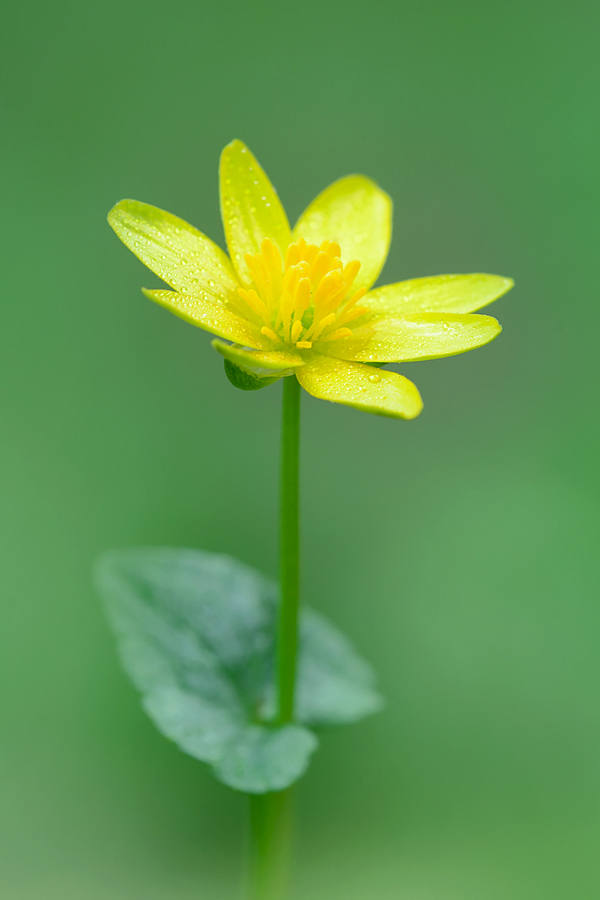
Lesser Celandine Ranunculus ficaria
Using a long telephoto lens helps to isolate the subject from its background. A tripod is a must in my opinion when using large heavy lenses. You want to position the focus point precisely since you are using a relatively wide aperture.
Nikon D800, 300mm 2.8 nikkor lens + extention tube @ f/5.6 ISO 200, tripod.
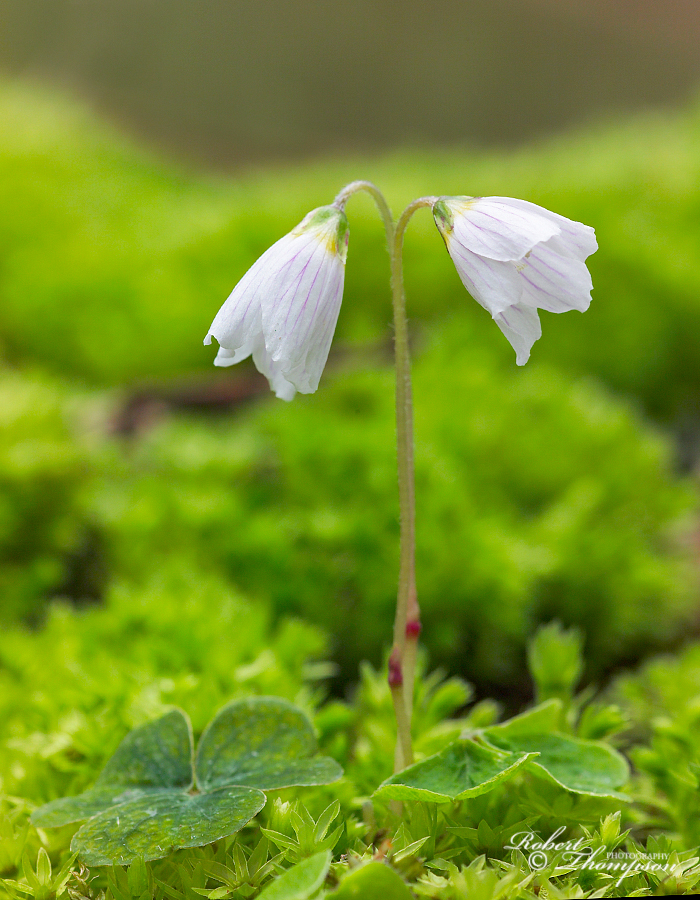
Wood Sorrel Oxalis acetosella
These small delicate flowers vibrate easily, even in a gentle breeze. The wind is always a problem in macro photography, especially with small, fragile flowers. Patience is required and waiting just for the right moment to push the shutter button. There is little you can do in a persistent breeze except try another day, or look for a more sheltered plant.
Nikon D810, 200mm micro nikkor lens @ f/8 ISO 200, tripod.
April and May are some of the high points in the macro photographer’s calendar. It’s also an opportunity to revisit old familiar habitats and revitalise the enthusiasm which for many, (with the exception of the diehards), go to ground during the winter months. The flowers also provide opportunities to experiment with different lenses. Wideangle shots of plants are worth pursuing when the backdrop is interesting and can add additional impact to the image. Don’t neglect long lenses for isolating plants and diffusing background clutter. Lenses in the focal range of 300mm work well with the addition of an extension tube to allow the lens to focus closer is all you need. Since you will be working mainly at ground level, you will need a tripod that has a removable central column and capable of resting flat to reduce the height of your ball head. It’s also a good idea to wear waterproof trousers, or having a ground mat to kneel on. A diffuser and reflector are useful to have in your bag to control light as well as deflecting it!
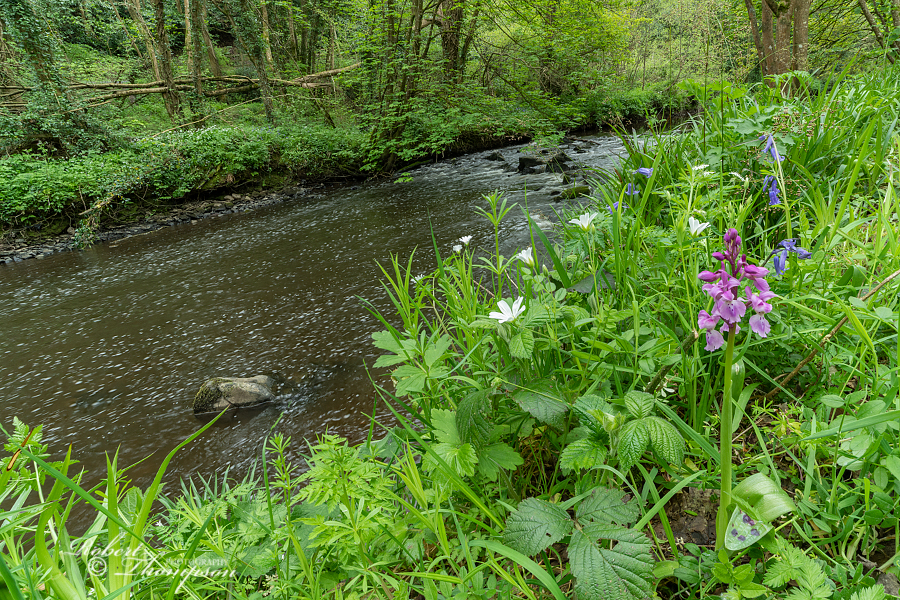
Early Purple Orchid Orchis mascula
Where possible, you should explore your subject using different focal length lenses. In this case, the backdrop was interesting so I used a wideangle macro to set the subject in context with its environment.
Nikon D850, Laowa 15mm wideangle macro lens @ f/8 ISO 100, tripod.
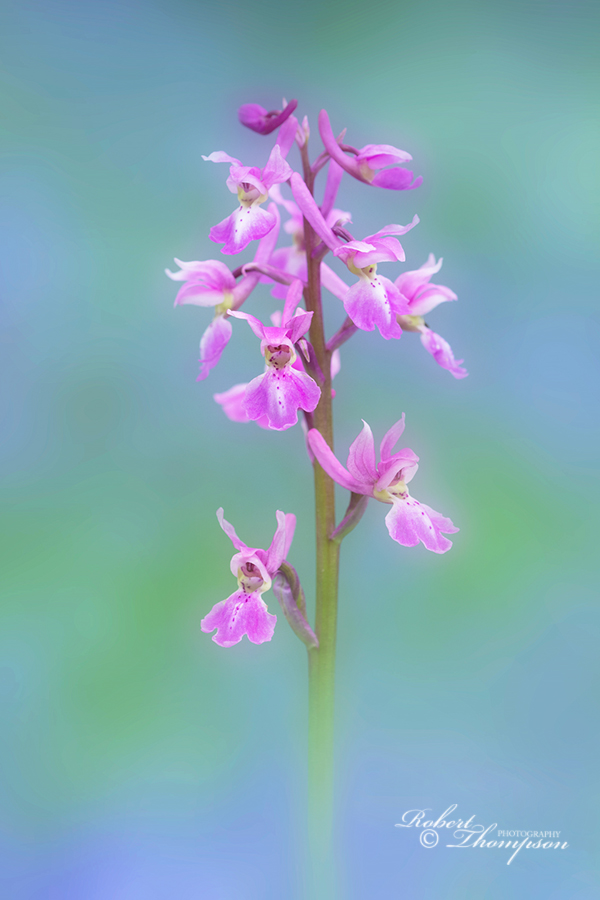
Early Purple Orchid Orchis mascula
I frequently prefer to use long telephoto lenses in combination with extension tubes when photographing flowers. Their narrow-angle of view helps to control background clutter creating a more diffused appearance, which helps to make your subject stand out. I this case, I chose a low angle and shot through the bluebells in the foreground creating this soft atmospheric look.
Nikon D850, Laowa 15mm wideangle macro lens @ f/8 ISO 100, tripod.
Many aquatic creatures at this time also move from deeper water and head towards the shallow margins of rivers and ponds in preparation for emergence. Dragonfly and damselfly larvae head into the shallow vegetated margins where the temperature is warmer in preparation for emergence into the aerial phase of their lifecycle. There is a distinct difference between the larvae of dragonflies and damselflies. We generally refer to both dragonflies and damselflies collectively as odonates and their larval stage as nymphs.
Dragonfly nymphs have long thick bodies with large heads and eyes. They also have 5 rear appendages which look spear-like in appearance. All true dragonflies have this feature. Damselflies are much more delicate with long, slender bodies and feather-like appendages which project beyond the end of the abdomen.
Odonates also have unique mouthparts often referred to as a mask which is acts a bit like a spring-loaded hydraulic pressure system. It can push fluids quickly from its body to the head forcing the extendable section of its mouthparts to shoot out at speed. A pair of hook-like claspers are used to embed and retain the prey which it then brings back to its mouthparts for consumption. All odonates possess this ability. When at rest it sits tucked underneath the head.
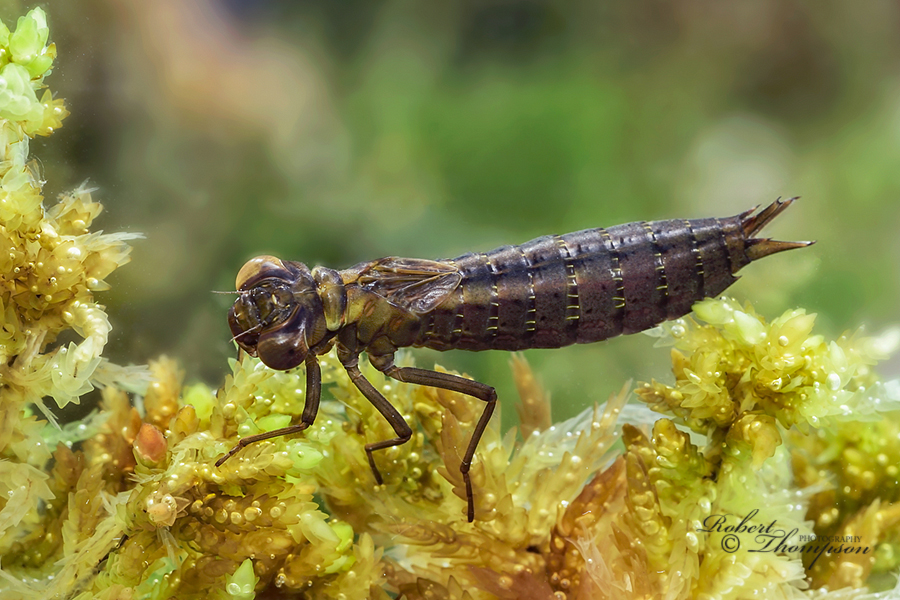
Common Hawker Aeshna juncea larva
I try if possible to photograph aquatic subjects in-situ. I can set up a tank and create the habitat using the substrate and vegetation from the river or sphagnum pool as in this case. This larva is still not fully mature as the wing buds are still relatively small.
Nikon D850, 200mm micro nikkor lens, flash @ f/11 ISO 200, tripod.

Variable Damselfly Coenagrion pulchellum Larva
Damselflies are naturally more delicate than their robust cousins. Care is need when removing them from their aquatic habitat. You can see the feather-like appendages at the end of the abdomen. Ideally, you always want to photograph a specimen where they are found. It is an easy process to return them to the water once you have finished the session.
Nikon D2X, 200mm micro nikkor lens flash @ f/11 ISO 200, tripod.
Spring is also breeding time for newts. The Smooth Newt is the most widespread species in the UK. They can be found in a range of water habitats including garden ponds. During the breeding season, the males develop a wavy crest and the underside of both sexes turn an orange colour with dark spotting. They make interesting subjects for photography. For information on aquatic photography tips and techniques refer to my current book on macro photography.
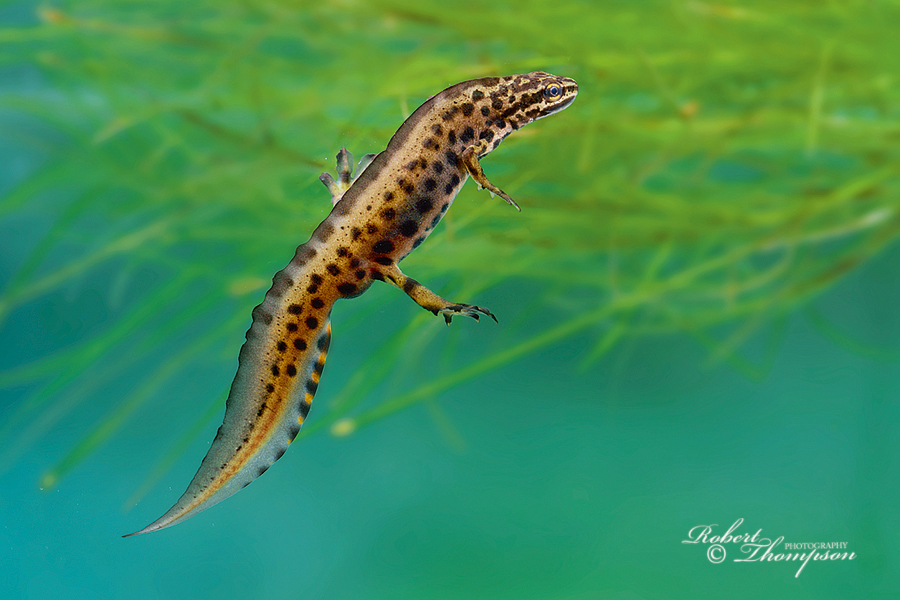
Smooth Newt Triturus vulgaris
Newts are always fascinating creatures to photograph. Males colour nicely during the breeding season and this is one of the best times to find and photograph them. For all aquatic photography, it’s best to have your tank setup prepared in advance. Limit your time with each subject. Overdoing it will stress them out and it becomes much more difficult to obtain natural-looking images.
Nikon D810, 105mm micro nikkor lens flash @ f/11 ISO 100, tripod.

